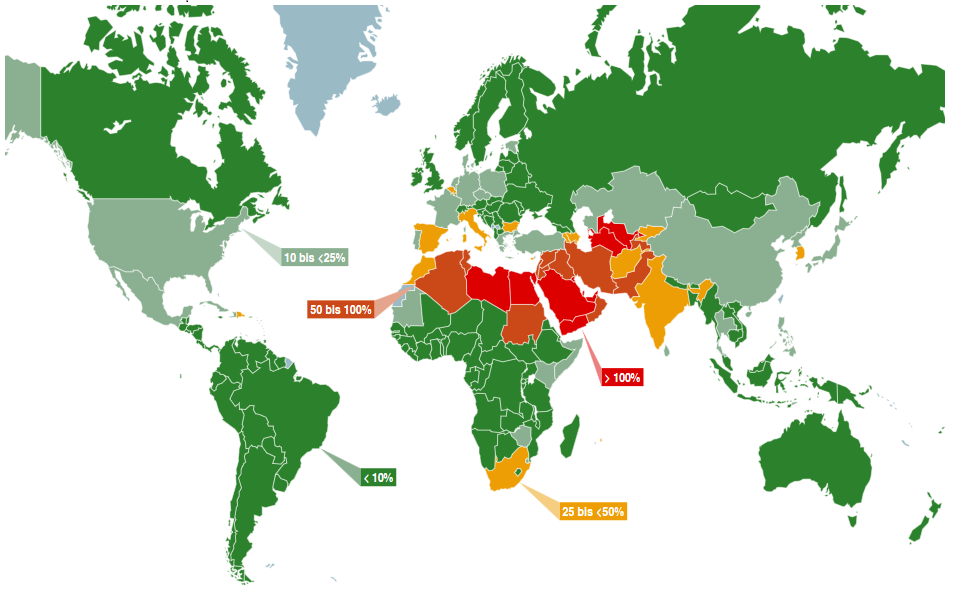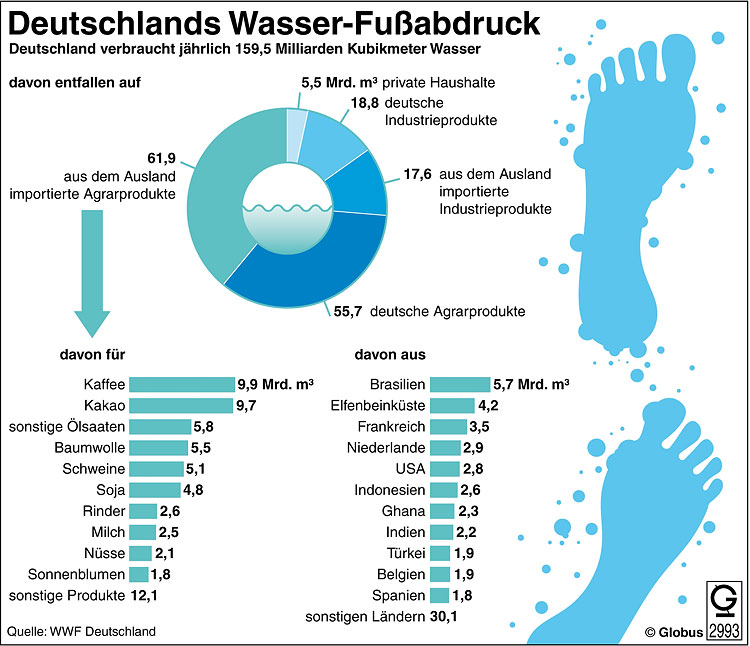The World Water Day was proposed on the Agenda 21 of the UNCED in Rio de Janeiro. The day should be used by the member states of the UN to promote concrete actions in their countries and to draw attention to this important resource. Non-governmental organizations and companies are also putting emphasis on water on this day.
What you should know about water
Two-thirds of the Earth are covered by water. 96.8% of this is saltwater, 3.2% freshwater. 75% of freshwater is frozen, 24.4% is groundwater and 0.6% is contained in rivers, lakes, atmosphere and soils. Water is one of the biggest challenges for sustainable development.
Water consumption will increase, especially in developing countries, with increasing urbanization and increasing prosperity. The access to water pipes, which supply drinking water directly, will result into a higher consumption. Also, the connection with other resources and their growth ensures an increase in consumption. For example, coal or nuclear power plants have a high fresh water consumption. In 2030, China’s thermal power plants are responsible for one third of the country’s industrial water turnover.
In order to use water as efficiently as possible, good knowledge about the resource itself and about its current availability and future use is essential. For the quantitative and qualitative preservation of the available water of a region, the recovery, reprocessing and reuse is important.
Figure 1 Percentage of annual fresh water withdrawal from renewable water resources 2016
Source: http://www.bpb.de/nachschlagen/zahlen-und-fakten/globalisierung/52730/wasserverbrauch
Looking at Figure 1, it can be assumed that water is not a resource for European companies that should be included in their sustainability efforts. This is not quite true. In addition to the water available at the site, businesses and individuals also consume a lot of virtual water.
Virtual Water – Amazingly Important Concept
The concept of virtual water was developed in the 1990s by the British scientist John Anthony Allan. This is the amount of water that is consumed, evaporated or polluted during the entire production chain of a particular product.
The Water Footprint is a further development of the virtual water concept and can be calculated for individuals as well as companies and entire nations. It includes the amount of water consumed directly and the amount of virtual water consumed in imported food and other imported goods.
Figure 2 Germanys Water Footprint
Source: https://www.geo.de/natur/nachhaltigkeit/5507-rtkl-virtuelles-wasser-25-badewannen-taeglich
In figure 2 you can see, that virtual water is a big part of Germanys water footprint. The country imports water intensive products also from countries which already have to deal with water shortage.
What options do companies have?
Water affects us all. Businesses can use a variety of ways to ensure that this valuable resource is available for the future.
- Risk analysis can increase your understanding of how your business impacts on local and global water resources
- Concrete reduction targets help to reduce consumption – even of virtual water
- Water management should be formalized through established processes
- Employees and stakeholders must be trained in the topic. From this, new ideas for reduction can emerge
- New technologies help to reduce water consumption and avoid water pollution
- Calculate the company-wide water footprint on a regular basis to measure developments!
Water Reporting – Requirements of your stakeholders
Companies should actively take responsibility for water and minimize their consumption as much as possible in order to be able to act sustainably even in times of climate change. Investors, NGOs and society value the transparent disclosure of corporate water consumption.
The CDP, founded as an initiative to disclose corporate CO2 emissions, began inviting companies to report on water related data in 2010. In addition to the CDP, the United Nations (UN) are working on international recommendations for water statistics (IRWS).
Being an official CDP Silver Climate Change Consultancy Partner, we know the methodology of CDP. Save time and effort and make use of our expertise. The DFGE have been supporting well-known CDP participants and helping them to improve their answers for a better CDP performance for many years now. Depending on your wishes and current status we support you individually from internal training for your team to workshops or subtasks in the CDP participation.











